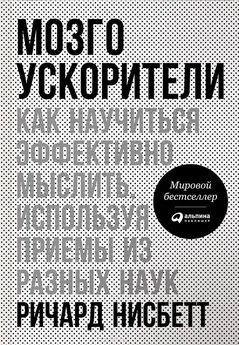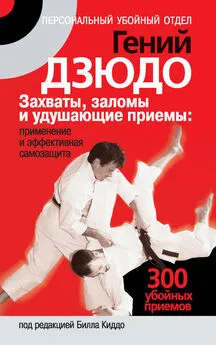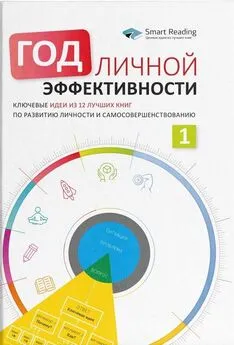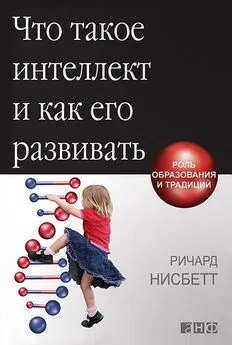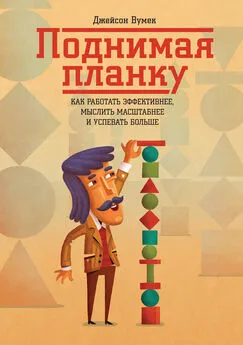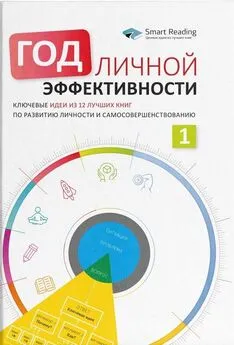Ричард Нисбетт - Мозгоускорители. Как научиться эффективно мыслить, используя приемы из разных наук
- Название:Мозгоускорители. Как научиться эффективно мыслить, используя приемы из разных наук
- Автор:
- Жанр:
- Издательство:Альпина Паблишер
- Год:2016
- Город:Москва
- ISBN:978-5-9614-5745-2
- Рейтинг:
- Избранное:Добавить в избранное
-
Отзывы:
-
Ваша оценка:
Ричард Нисбетт - Мозгоускорители. Как научиться эффективно мыслить, используя приемы из разных наук краткое содержание
По статистике, пары, которые устраивают пышные свадьбы, реже разводятся. Почему? Просто состоятельные люди имеют меньше поводов для ссор, чем бедные, да и разводиться им менее выгодно. То есть прямой связи между масштабом вечеринки и вероятностью развода нет, но есть неочевидный третий фактор, который все объясняет.
Наша жизнь полна таких скрытых факторов, а наш мозг любит упрощать реальность, увязывая никак не связанные вещи. Всемирно известный психолог Ричард Нисбетт объясняет, почему простые ответы приводят к неверным решениям и роковым ошибкам. Хорошая новость в том, что каждый из нас способен не вестись на уловки «здравого смысла» и научиться мыслить ясно и критически. По словам Нисбетта, «лучшая жизнь в современном мире вам попросту недоступна без базовых знаний статистики и логики». Автор дарит читателю целый арсенал способов решать жизненные задачи и принимать правильные решения в сложных ситуациях. И делает он это так элегантно и увлекательно, что оценит каждый гуманитарий.
Мозгоускорители. Как научиться эффективно мыслить, используя приемы из разных наук - читать онлайн бесплатно ознакомительный отрывок
Интервал:
Закладка:
Примечания
1
Gould, Stephen J. "The Panda's Thumb." In The Panda's Thumb. New York: W.W.Norton, 1980.
2
Nisbett, Richard Е. “Hunger, Obesity and the Ventromedial Hypothalamus.” Psychological Review 79 (1972): 433-53.
3
Polanyi Ml. Personal Knowledge: Toward a Post-Critical Philosophy. New York: Harper & Row, 1958.
4
Нисбетт Р. География мысли. — М.: Астрель, 2011.
5
Lehman et al., “The Effects of Graduate Training on Reasoning”; Lehman, Darrin, and Nisbett, “A Longitudinal Study of the Effects of Undergraduate Education on Reasoning”; Morris and Nisbett, “Tools of the Trade.”
6
Larrick, Morgan, and Nisbett, “Teaching the Use of Cost-Benefit Reasoning in Everyday Life”; Larrick, Nisbett, and Morgan, “Who Uses the Cost-Benefit Rules of Choice? Implications for the Normative Status of Microeconomic Theory”; Nisbett et al., “Teaching Reasoning”; Nisbett et al., “Improving Inductive Inference” in Kahneman, Slovic, and TVersky, Judgment Under Uncertainty; Nisbett et al., “The Use of Statistical Heuristics in Everyday Reasoning.”
7
Здесь и далее автор говорит о так называемом критерии Поппера. Согласно доктрине фальсификационизма (принципиальной или потенциальной опровержимости) австрийского и британского философа Карла Поппера (1902-1994), критерием научности теории является то, что она не может быть принципиально неопровержимой, поскольку следует иметь в виду, что она может быть опровергнута результатами еще не поставленного эксперимента. — Прим. ред.
8
Shepard, Roger N. Mind Sights: Original Visual Illusions, Ambiguities, and Other Anomalies. New York: W. H. Freeman and Company, 1990.
9
Higgins, E. Tory, W. S. Rholes, and C. R. Jones. “Category Accessibility and Impression Formation.” Journal of Experimental Social Psychology 13 (1977): 141-54.
10
Bargh, John A. “Automaticity in Social Psychology.” In Social Psychology: Handbook of Basic Principles, ed. byE.T. Higgins and A.W. Kruglanski, 1-40. New York: Guilford, 1996.
11
Cesario, J., J. Е. Plaks, and Е. Т. Higgins. “Automatic Social Behavior as Motivated Preparation to Interact.” Journal of Personality and Social Psychology 90 (2006): 893-910.
12
Darley, John M., and P. H. Gross. “A Hypothesis-Confirming Bias in Labeling Effects.” Journal of Personality and Social Psychology 44 (1983): 20-33.
13
Meyer, David Е., and R.W. Schvaneveldt. “Facilitation in Recognizing Pairs of Words: Evidence of a Dependence Between Retrieval Operations.” Journal of Experimental Psychology 90 (1971): 227-34.
14
Росс Л., Уорд А. Наивный реализм в повседневной жизни и его роль в изучении социальных конфликтов и непонимания // Вопросы психологии. 1999. №5.
15
Jung, К., S. Shavitt, М. Viswanathan, and J. М. Hilbe. “Female Hurricanes Are Deadlier Than Male Hurricanes.” Proceedings of the National Academy of Science (2014). Published electronically June 2, 2014.
16
Alter, Adam. Drunk Tank Pink. New York: Penguin Group, 2013.
17
Berman, M. G., J. Jonides, and S. Kaplan. “The Cognitive Benefits of Interacting with Nature” Psychological Science 19 (2008): 1207-12.
18
Alter, Adam. Drunk Tank Pink. New York: Penguin Group, 2013.
19
Berger, Jonah, M. Meredith, and S. C. Wheeler. “Contextual Priming: Where People Vote Affects How They Vote.” Proceedings of the National Academy of Science 105 (2008): 8846-49.
20
Rigdon, М., К. Ishii, М. Watabe, and S. Kitayama. “Minimal Social Cues in the Dictator Game.” Journal of Economic Psychology 30 (2009): 358-67.
21
Song, H., and N. Schwarz. “If It’s Hard to Read, It’s Hard to Do.” Psychological Science 19 (2008): 986-88.
22
Lee, S.W.S., and N. Schwarz. “Bidirectionality, Mediation, and Moderation of Metaphorical Effects: The Embodiment of Social Suspicion and Fishy Smells.” Journal of Personality and Social Psychology (2012). Published electronically August 20, 2012.
23
Alter, Adam, and Daniel M. Oppenheimer. “Predicting Stock Price Fluctuations Using Processing Fluency Proceedings of the National Academy of Science 103 (2006): 9369-72.
24
Danziger, Shai, J. Levav, and L. Avnaim-Pesso. “Extraneous Factors in Judicial Decisions. ’’Proceedings of the National Academy of Science 108 (2011): 68, 89-92.
25
Williams, Lawrence E., and John A. Bargh. “Experiencing Physical Warmth Infl uences Personal Warmth.” Science 322 (2008): 606-607.
26
Dutton, Donald G., and Arthur P. Aron. “Some Evidence for Heightened Sexual Attraction Under Conditions of High Anxiety.” Journal of Personality and Social Psychology 30 (1974): 510-51.
27
Levin, Irwin P., and Gary J. Gaeth. "Framing of Attribute Information Before and After Consuming The Product." Journal of Consumer Research 15 (1988): 374-78.
28
McNeil, В.J., S.G. Pauker, Н.С. Sox, and A. Tversky. “On the Elicitation of Preferences for Alternative Therapies.” New England Journal of Medicine 306 (1982): 943-55.
29
Kahneman, Daniel. Thinking, Fast and Slow. New York: Farrar, Straus and Giroux, 2011.
30
Tversky, Amos, and Daniel Kahneman. “Extensional Versus Intuitive Reasoning: The Conjunction Fallacy in Probability Judgment.” Psychological Review 90 (1983): 293-315.
31
Jennings, Amabile, and Ross, “Informal Covariation Assessment: Data-Based Vs. Theory-Based Judgments,” in Tversky and Kahneman, Judgment Under Uncertainty.
32
Gilovich, Thomas, Robert Vallone, and Amos TVersky. “The Hot Hand in Basketball: On the Misperception of Random Sequences.” Cognitive Personality 17 (1985): 295-314.
33
Jones, Edward Е., and Victor A. Harris. “The Attribution of Attitudes.” Journal of Experimental Social Psychology 3 (1967) : 1-24.
34
Darley, John M., and Bibb Latane. “Bystander Intervention in Emergencies: Diffusion of Responsibility.” Journal of Personality and Social Psychology 8 (1968): 377-83.
35
Darley, John М., and С. Daniel Batson. “From Jerusalem to Jericho: A Study of Situational and Dispositional Variables in Helping Behavior.” Journal of Personality and Social Psychology 27 (1973): 100-119.
36
Pietromonaco, Paula R., and Richard E. Nisbett. “Swimming Upstream Against the Fundamental Attribution Error: Subjects’ Weak Generalizations from the Darley and Batson Study.” Social Behavior and Personality 10 (1982): 1-4.
37
Humphrey, Ronald. “How Work Roles Influence Perception: Structural-Cognitive Processes and Organizational Behavior.” American Sociological Review 50 (1985): 242-52.
38
Triplett, Norman. “The Dynamogenic Factors in Pacemaking and Competition.”Amerfcart Journal of Psychology 9 (1898): 507-33.
39
Brown, В. Bradford, Sue Ann Eicher, and Sandra Petrie. “The Importance of Peer Group (‘Crowd’) Affiliation in Adolescence.” Journal of Adolescence 9 (1986): 73-96.
40
Kremer, Michael, and Dan M. Levy. “Peer Effects and Alcohol Use Among College Students.” National Bureau of Economic Research Working Paper No. 9876, 2003.
41
Prentice, Deborah A., and Dale T. Miller. “Pluralistic Ignorance and Alcohol Use on Campus: Some Consequences of Misperceiving the Social Norm.” Journal of Personality and Social Psychology 64 (1993): 243-56.
42
Liu, Amy, S. Ruiz, L. DeAngelo, and J. Pryor. “Findings from the 2008 Administration of the College Senior Survey (CSS): National Aggregates.” Los Angeles: University of California, Los Angeles, 2009.
43
Sanchez-Burks, Jeffrey. “Performance in Intercultural Interactions at Work: Cross-Cultural Differences in Responses to Behavioral Mirroring.” Journal of Applied Psychology 94 (2009) : 216-23.
44
Goethals, George R., and Richard F. Reckman. “The Perception of Consistency in Attitudes.” Journal of Experimental Social Psychology 9 (1973): 491-501.
45
Goethals, George R., Joel Cooper, and Anahita Naficy. “Role of Foreseen, Foreseeable, and Unforeseeable Behavioral Consequences in the Arousal of Cognitive Dissonance.” Journal of Personality and Social Psychology 37 (1979): 1179-85.
46
Nisbett, Richard Е., С. Caputo, Р. Legant, and J. Maracek. “Behavior as Seen by the Actor and as Seen by the Observer.” Journal of Personality and Social Psychology 27 (1973): 154-64.
47
Там же.
48
Нисбетт Р. География мысли. — М.: Астрель, 2011.
49
Masuda, Takahiko, P. C. Ellsworth, B. Mesquita, J. Leu, and E. van de Veerdonk. “Placing the Face in Context: Cultural Differences in the Perception of Facial Emotion.” Journal of Personality and Social Psychology 94 (2008): 365-81.
50
Masuda, Takahiko, and Richard E. Nisbett. “Attending Holistically Vs. Analytically: Comparing the Context Sensitivity of Japanese and Americans.” Journal of Personality and Social Psychology 81 (2001): 922-34.
51
Cha, J.-H., and K. D. Nam. “A Test of Kelley’s Cube Theory of Attribution: A Cross-Cultural Replication of McArthur’s Study.” Korean Social Science Journal 12 (1985): 151-80.
52
Choi, Incheol, and Richard E. Nisbett. “Situational Salience and Cultural Differences in the Correspondence Bias and in the Actor-Observer Bias.” Personality and Social Psychology Bulletin 24 (1998): 949-60.
53
Нисбетт Р. География мысли. — М.: Астрель, 2011
Читать дальшеИнтервал:
Закладка:
